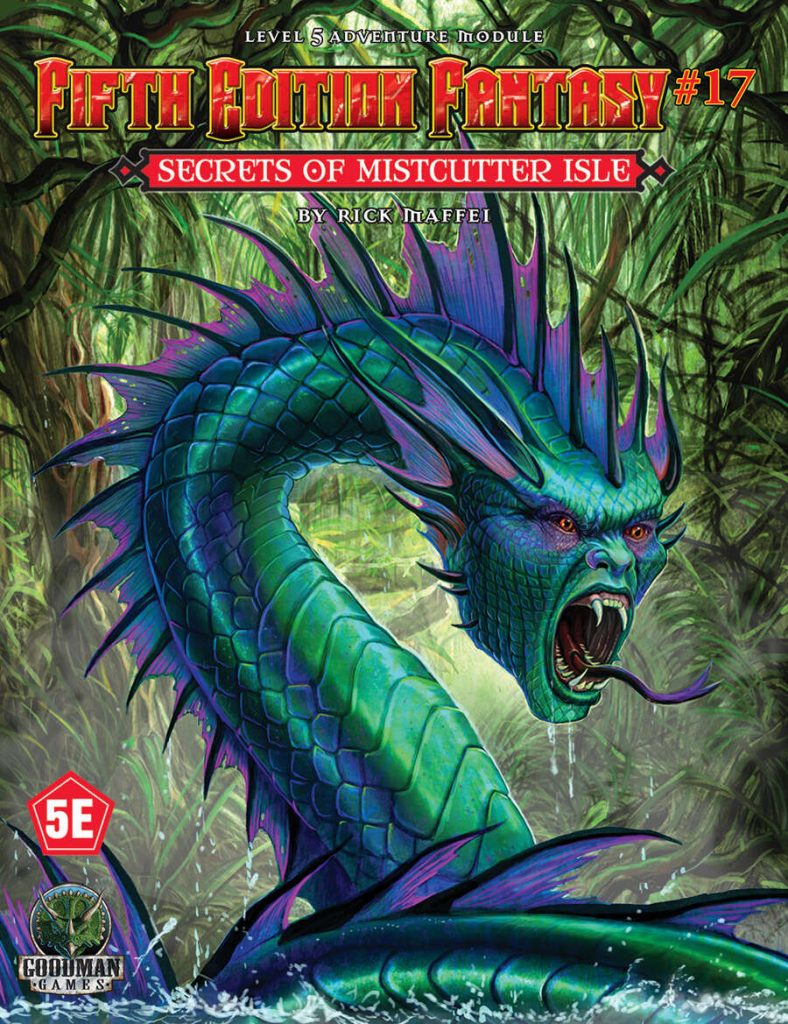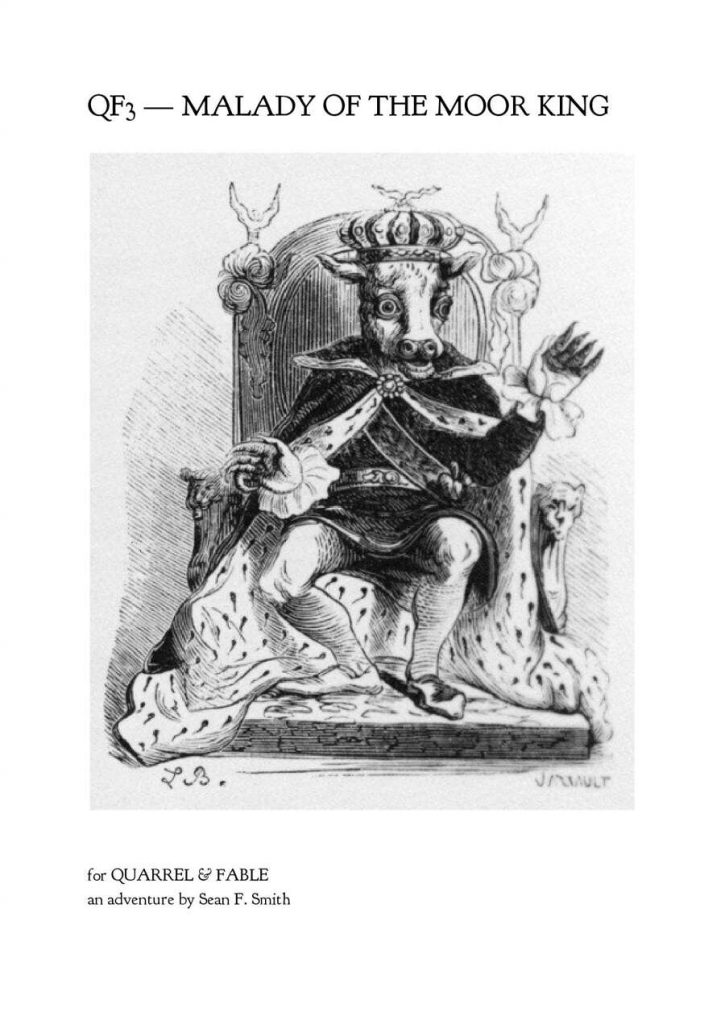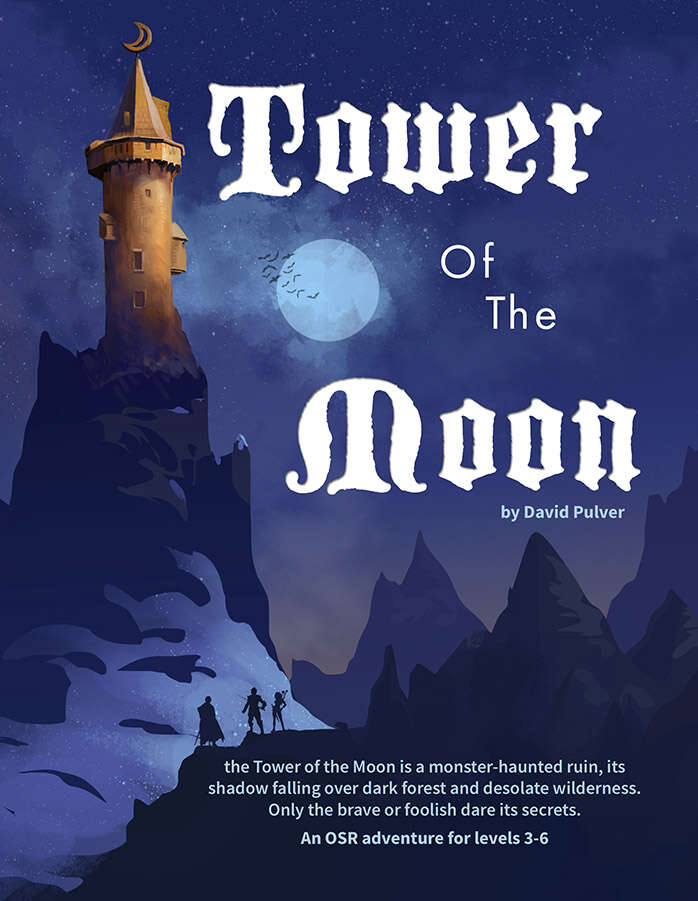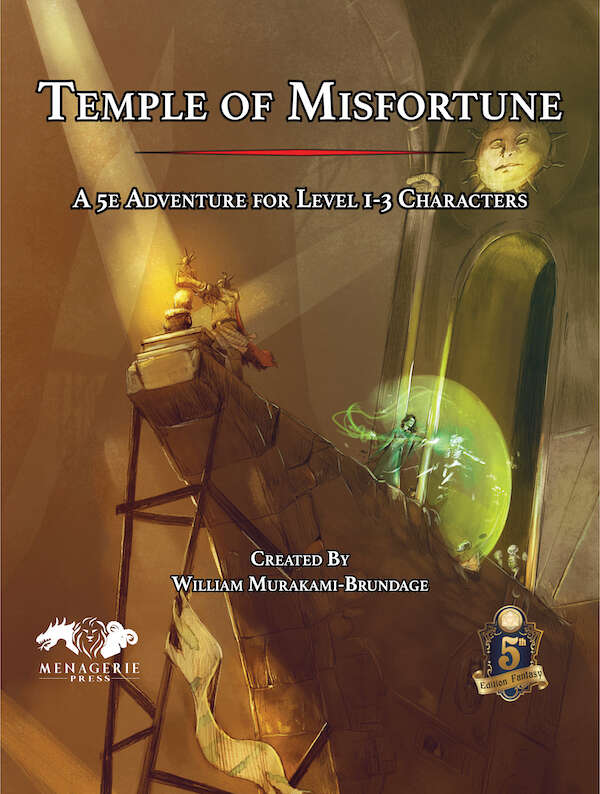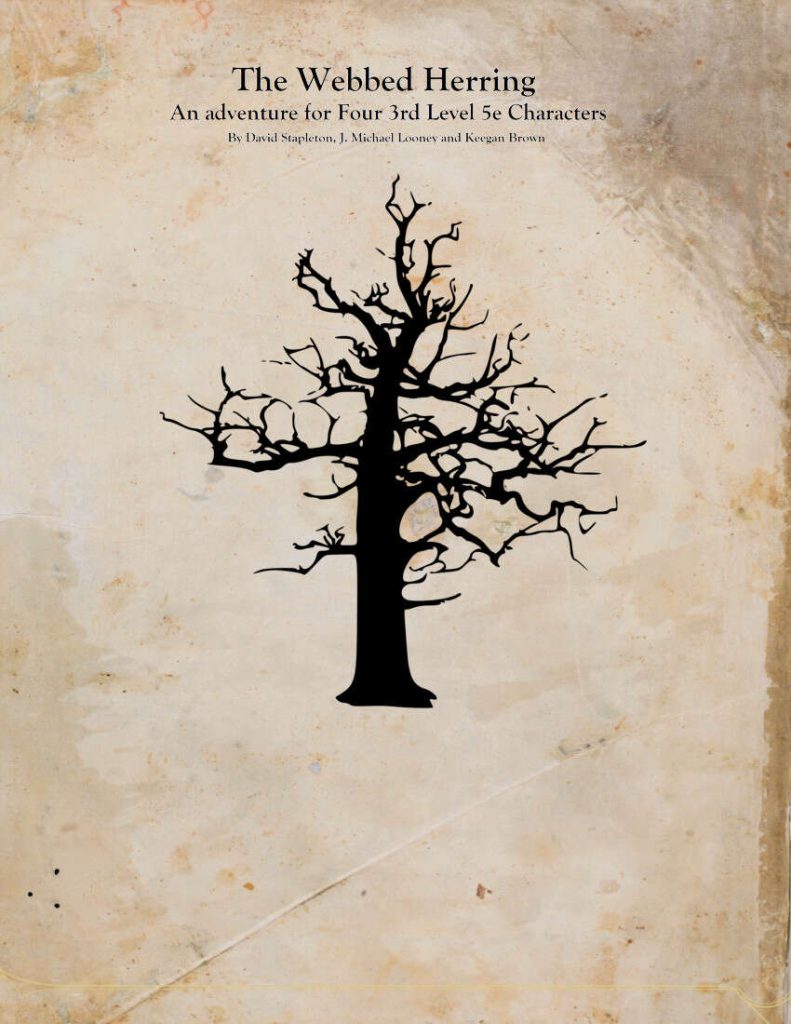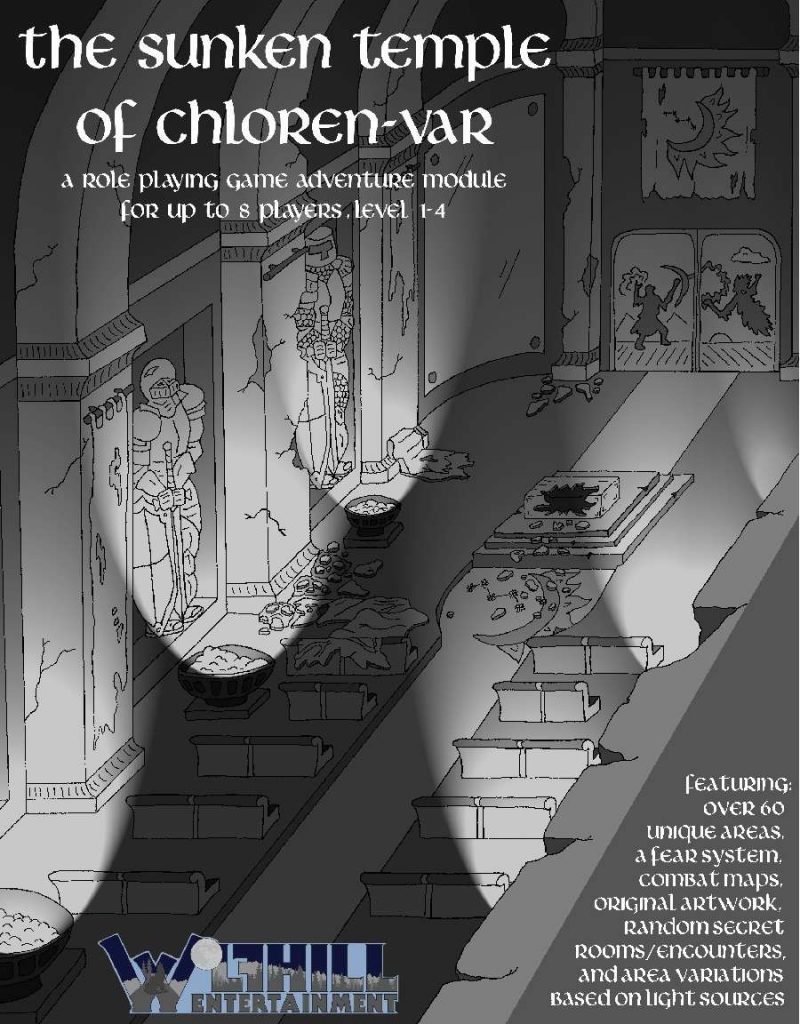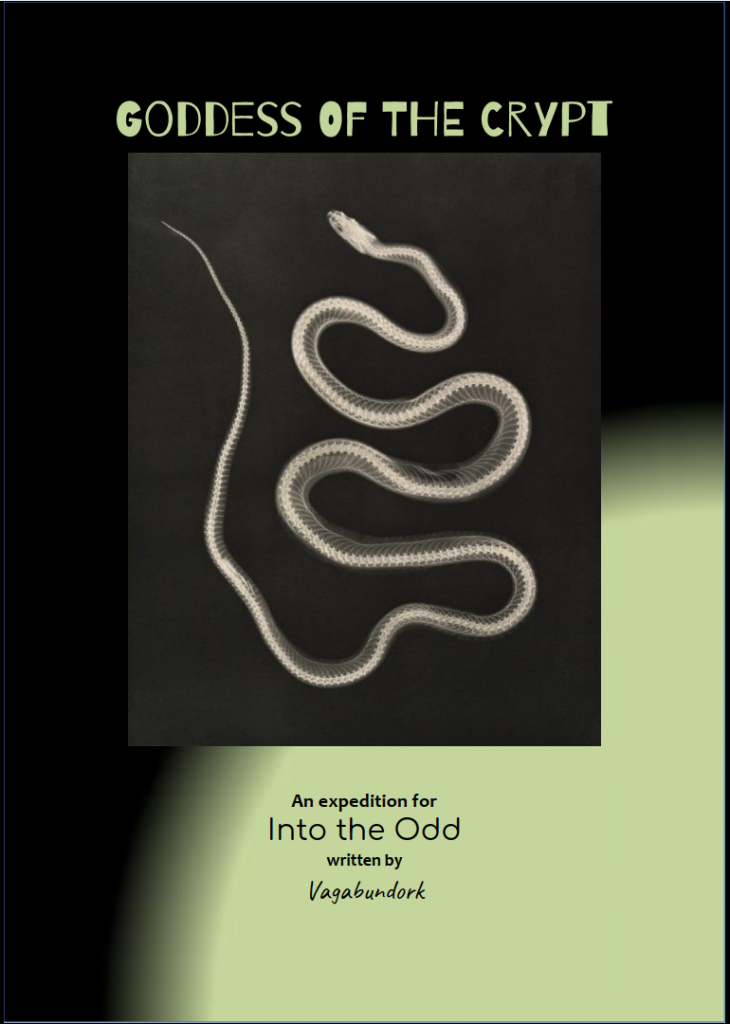
By Vagabundork Self Published Into the odd
This small dungeon combines subtle Egyptian and Mayan themes, weird fiction, non-Euclidean geometry and a touch of gonzo oddness.
This 24 page adventure details a fifteen-ish room dungeon in about twelve single-column pages. It’s interactive, evocative, and tries hard to be useful to the DM at the table using a nested tree-like description format. Commitment to a vision is a good thing. Too much commitment to a vision is fanaticism and not good. You gotta know when to sacrifice. This don’t.
A great many of my positions can be thought of in terms of a spectrum. You’ve got two extremes and a middle point and I’m generally encouraging people to move off of their position near an extreme closer to the middle where a great band of “good enough” surrounds the “perfect” midpoint. This is usually confused as “Bryce wants everything spelled out for him” or “the reviewer favors minimalism.” No, neither.
The descriptions in this adventure are pretty well done. They’re evocative. This isn’t achieved by droning on and on. This is achieved both by good word selection and leveraging a “less is more” attitude. Many things lose their wonder when overly explained. Magic items, Wonder. Magnets … how do they work? One interesting technique, used here, for being evocative is to remain mysterious. Our brains want to fill in detail. They want to explain. By giving them the right degree of detail, in the right way, they leap to explain and imagine and fill in. The main description for room nine, The Crypt, is “Scales cover the ground. An altar in the southeast corner. Murals of religious scenes: snake as deities, snakes as priests” It’s not much but revels, in a way. I’d summarize it, but it’s already essentially summarized for you with crypt, scales covering the ground, an alter and freaky murals. And note that the freaky murals are DESCRIBED. It’s not just “murals of victory” or some other abstraction, as many adventures provide for. No, it’s specific: as deities, as priests. It’s not the only way to get to an evocative description, but the combination of specificity and starkness does a great job.
It’s also fairly interactive, pillar two of the Bryce Watchwords. More than just stabbing things. There a great set of snake jaws that make up a door with gears to move them. More than trap, a trap wto PLAY with. An alter of snake bones (in that crypt, great detail, again) that releases toxic gas when disturbed. Jars hanging from an intertricate techno ceiling with fluid in them … and proto snake things as well. A wall covered in lichen and vines … and a hidden power cable. There’s so much that reveals itself to further examination … and reckless play. Check.
[Note: this next part has some comments about Engligh as a Second Language. I would not say this adventure has language issues. Far from it. But some of the choices made in formatting remind me of non-Engligh Subject/Verb order … and I see things available in Spanish as well. It’s an academic comment, not a usability one.]
And then there’s the “Helps the DM run it”, of which a major part is the DM’s ability to scan the text and locate the information they need. This adventure is trying a format I’ve seen a couple of times before, with nested bullet points to describe things. Major thing. Then a nested detail, and then maybe a nested detail of that. It’s not a bad idea. The top-level bullets helps bring the eye to the important details while it’s then easy to find additional information about those things by looking at the nested/indented bullets.
The adventure has a couple of problems in its specific implementation though. First, it’s gone overboard on the nesting. There are four or five levels in some cases. And three is pretty frequent. This end up making things harder to understand. I THINK I get what is going on. It’s almost like it’s one of those modern grammar teaching lessons where you break a sentence down in to clauses and make a tree-like structure from it. Now, let’s assume you did that for EVERYTHING in the adventure. That’s not the case here, but imagine it. It’s trying to follow some quite strict rules about nesting of detail … and has made that the assumption that this is good. Well, yes, it’s KIND OF good. But, by strictly following those nesting rules you’re loosing sight of the overall goal: usability. This reminds me of those adventures that always put a Sight, Sounds, Light, Door, Smell, taste, etc section at the start of EVERY. SINGLE. ROOM. regardless of if they need it or not. Too much implementation of a decent idea. Instead, focus on the overall outcome, usability, keep your general technique in mind, nesting, and sacrifice the technique when it detracts from the outcome. In one section there are some While Apes. That’s the top level. Ok. Second level nest: chained to the walls. Well, ok. Third level nest: they are food for the goddess. Uh … was that necessary to nest? White Apes-? Chained t o the wall, food for the goddess would have worked also. Even better: White Apes chained to the Wall-> Food for the goddess. Then the important detail “there’s fucking apes chained to the wall!” is immediately apparent. The adventure does this time and again. It needed to add a little, the obvious shit, to the top level nouns and combine a bullet of two. That would substantially condense the adventure.
In other places the nesting looks backwards to me, with the important details deeper in the nest. A door-> Make a dex save to open it using tools->if opened make a dex save vs death->success: leap backwards to avoid being buried by snakes. The snakes falling from the ceiling is the important bit (so many they smother you!) but it’s buried. It should be moved higher up. Likewise there are other details that seem to be in a weird order as well, like a stone circle in room one that left dangling near the end. And for its attempt at usability, I still have no idea what “1g” and “1p” refer to in the monster charts, or which door in room one is stuck and which isn’t. Still, it’s trying, with cross-references and all.
I think it’s a great attempt. The format needs some polishing, but it’s got potential. And the evocativeness and interactivity are certainly present.
This is free at the designers blog. Which is interesting in and of itself.

